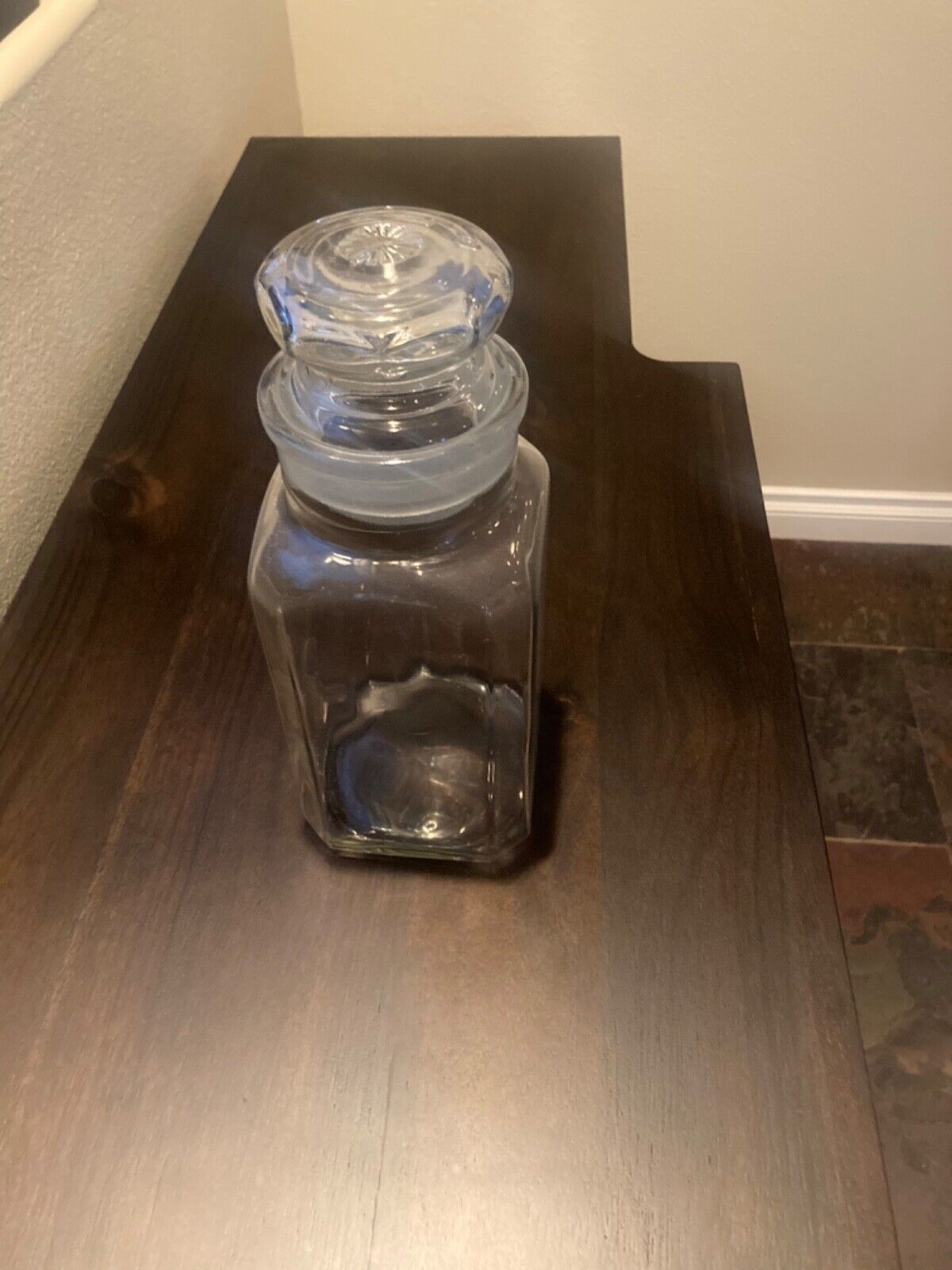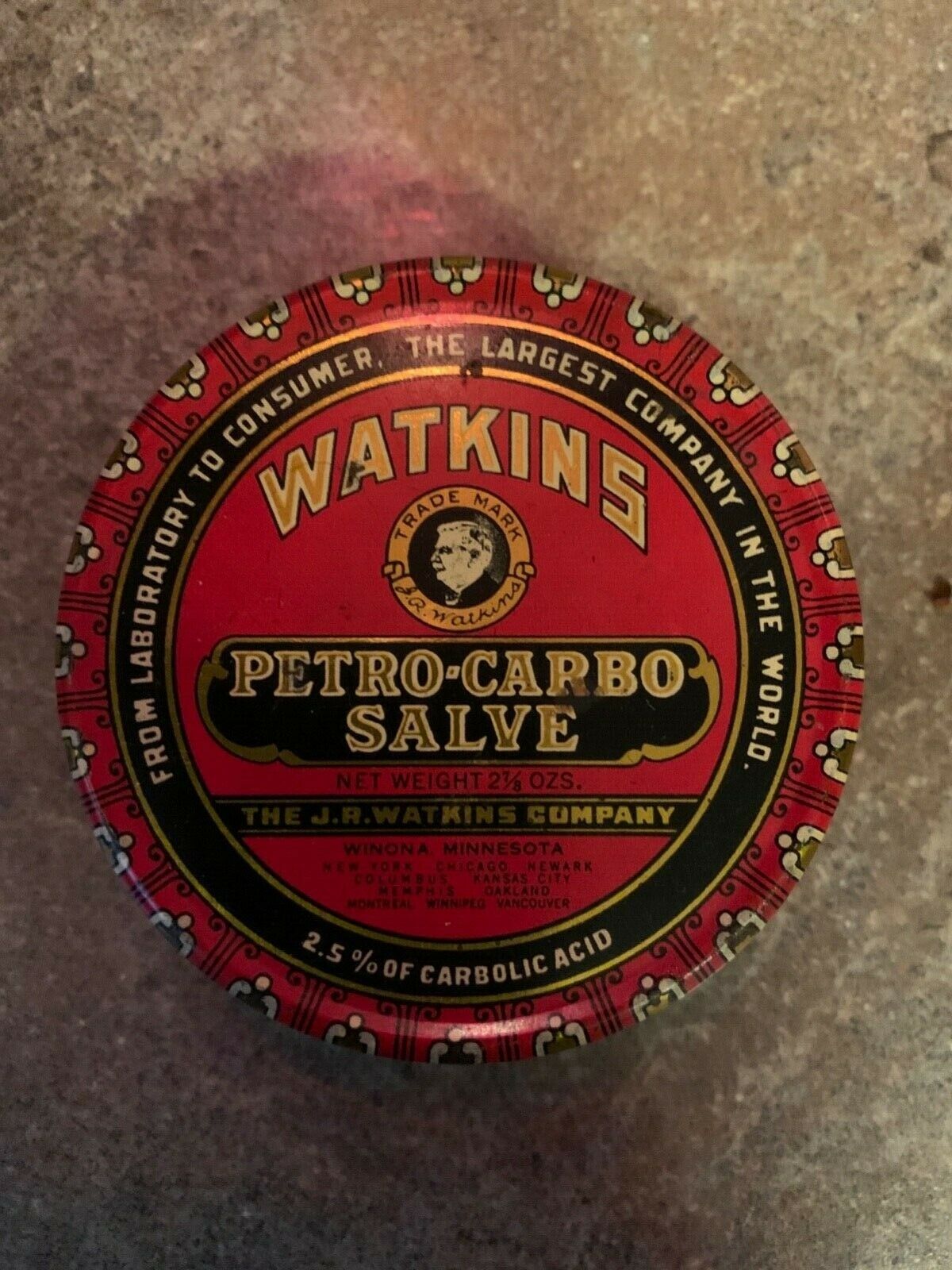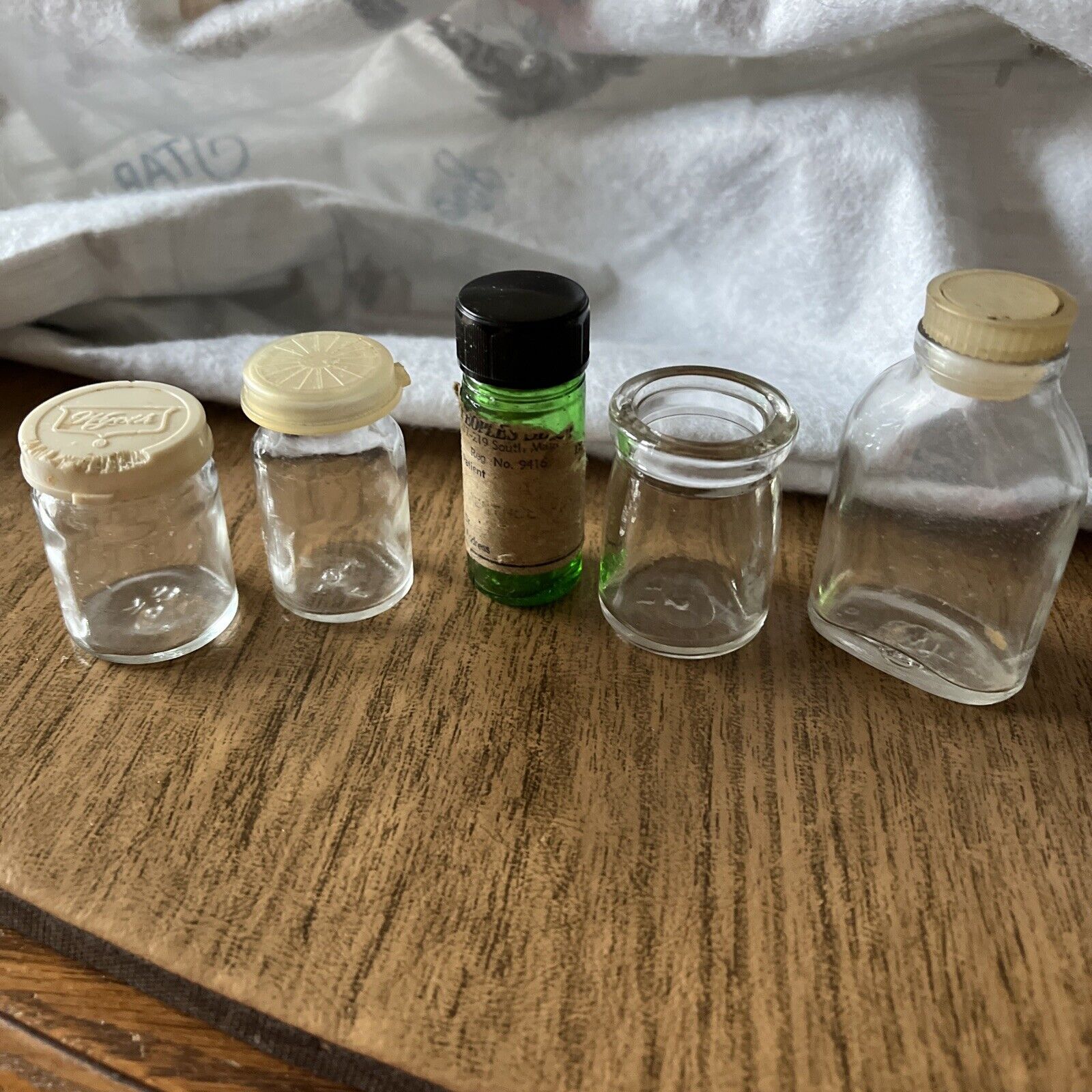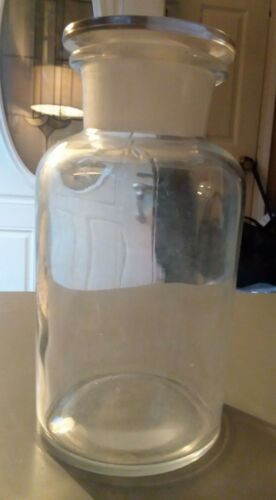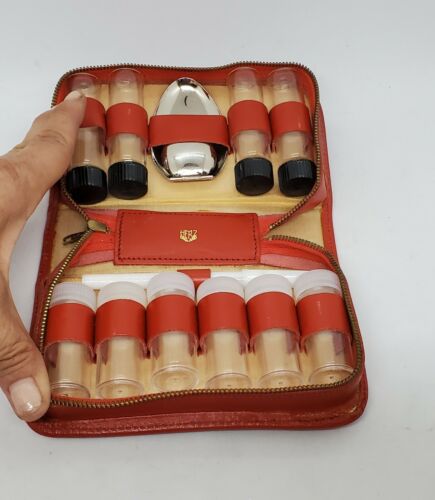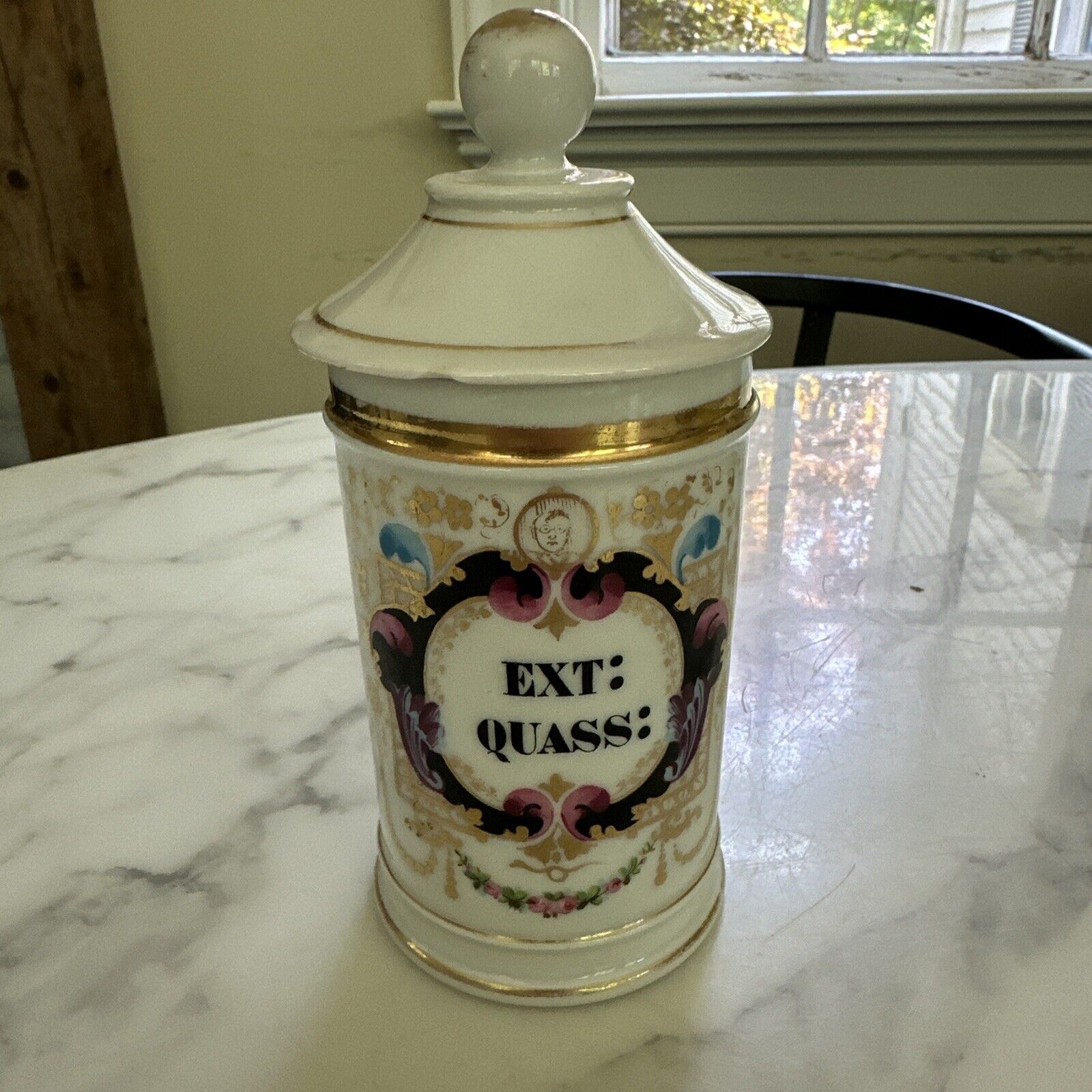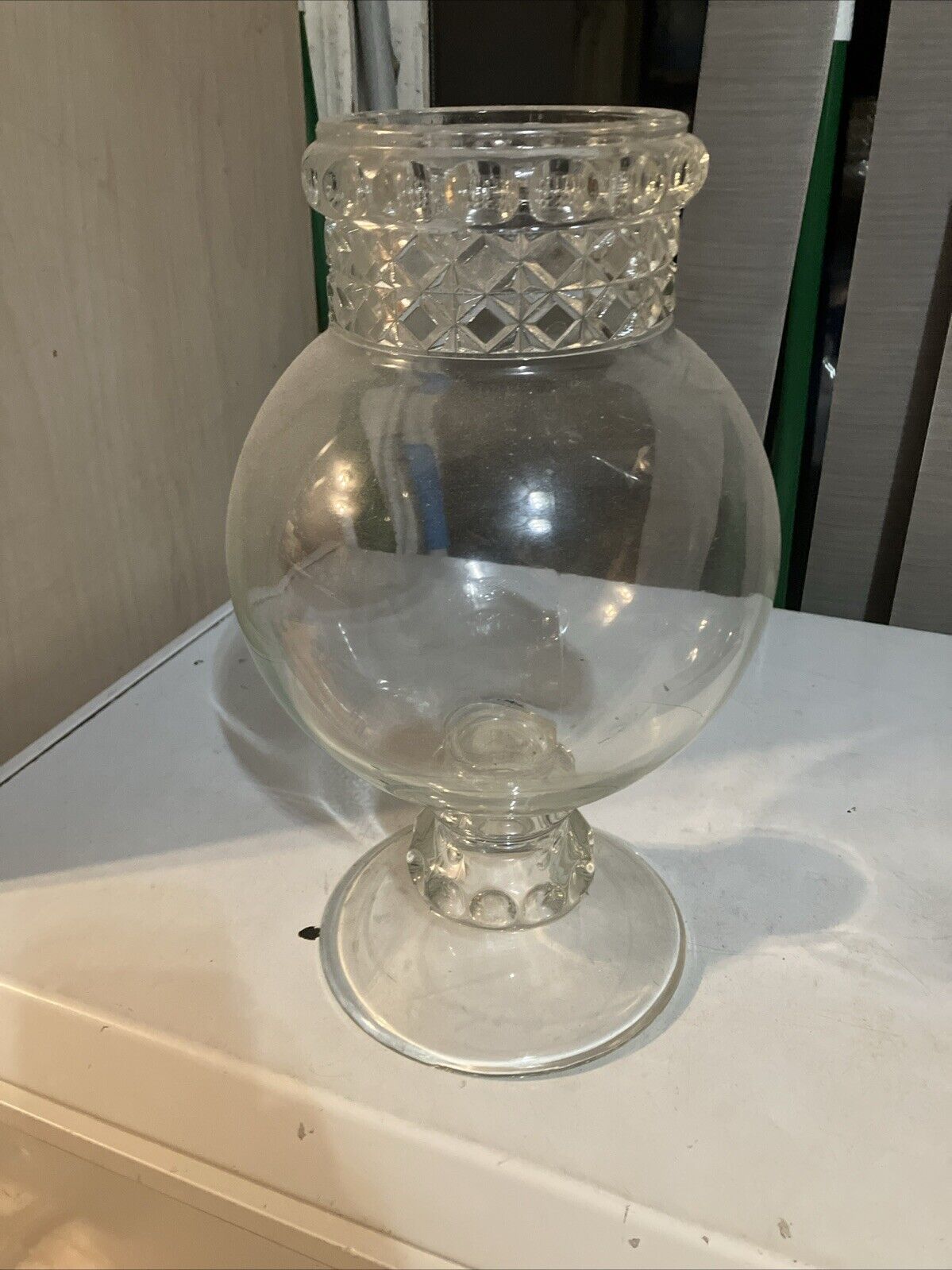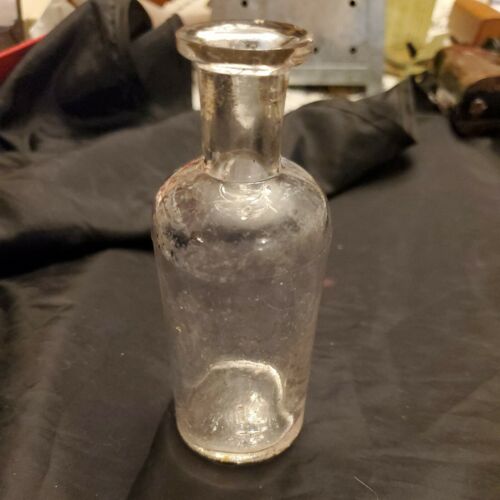Description
Showcase by Seller SourceBook
Vintage Sulfotone Empty Container Vintage Medication Dispenser
X
Click to Enlarge
Vintage Sulfotone Empty Container Vintage Medication Dispenser.
Plastic, has a lid.
Measures about 2" long x 1/2" diameter.
Inside are some sewing needles (which were in there when I acquired this item).
On the container notes:
"Sulfotone Reg. US Pat. Office"
Sulfur Phenobarbital
GRS: 1-1/4
Phenobarbital, grains, 1-1/4
synergised with Poy-
thress colloidal sulphur
Directions: One, three
times a day.
Wm. Poythress & Co., Inc.
Richmond Va
Assumed to be a vintage medical collectible container. No contents.
Please message me with questions. Thank you for your interest.
This is information I found online about this company; it was from the 1890's:
William P. Poythress, Druggist - his pharmaceutical company
Charles Neal
3/29/2001, 7:07:09 AM
BPN again reporting: I later last night realized that what I needed to do when I was at the LVA site & while I had on my screen that small version of the document (with "DOCUMENT" emblazoned across it), was to CLICK on the document -- That opens it up *much* larger. [One of those moments when I realized my problem.] Then, as Diana noted, it is just a matter of trying to read Mr. S. Bassett French's handwriting. Diana, your transcription got most of it, with just a few words of difference that I could discern. My reading of the document is as follows: "444 Poythress Wm P [underlined] Druggist born in Richmond 18[blank] Attended the well known Miller's Classical School, and then Va Med Coll. In 1868, he became an employee in the drug firm of Meade and Baker, which was established in 1856. Upon the death of the senior partner the business was continued by Mr. Baker until his death in 1892, when Mr. Poythress became the proprietor, continuing the business under the old firm name of Meade and Baker, and is one of the largest and best stocked in the City" Now, re your comment You were not at all wrong: he was one & the same. As a matter of fact, the name change may give some indication of just when Mr. French had made the above notes. (Perhaps in the 1890s - See paragraph 8 of the below-quoted document. There are some discrepancies in what Mr. French noted above and the company's history as presented below.) For the benefit of those who have not searched thru the Poythress-List Archives, and in case it wasn't in the Archives, anyway, I will round this out by quoting from a document that Barbara Poythress Wolfe got back in Feb of 1992 along with a brief letter from the company, whose letterhead then read: WILLIAM P. POYTHRESS AN E.C. ROBINS COMPANY P. O. BOX 71600 RICHMOND, VIRGINIA 23255 The accompanying document does not list an author/compiler, or a date. From information in it, it is obvious that it was a speech, presented perhaps in approximately 1943. The information appears to have been made freely available to the public. It reads as follows [Note: I cannot help but wonder whether the Hugh W. Jones mentioned below might not have been of the same Jones family that Diana had already noted being connected to a Poythress line]: "EARLY HISTORY OF THE WILLIAM P. POYTHRESS & COMPANY, INC. At the dawn of our Company's history, two gentlemen separated themselves forever from lesser mortals by filling a wagon with miscellaneous drugs and supplies, driving down the muddy streets to the corner of 9th and Franklin in the small city of Richmond, and setting up an apothecary shop. The year was 1856. The gentlemen were Mr. Richard Meade and Mr. T. Roberts Baker. Their doings were important for they planted the seed from which sprang no less than five pharmaceutical manufacturing firms: Meade and Baker Carbolic Mouthwash Company, Polk Miller Company, A.H. Robins Company, Van Pelt & Brown, and, of course, the William P. Poythress & Company. Little is known of the personal history of Messrs. Meade and Baker. At the time they went into business together they were experienced pharmacists, pillars of the Monument Episcopal Church, and members of well-to-do families. Mr. Meade, the senior partner, was the driving force behind the growth of the business. He was tall, impressive, and an austere person, a fine businessman and well respected by all who knew him. His grandson is a prominent doctor in Richmond today. Mr. Baker was fun-loving, full of tall tales and practical jokes. It was he, however, who experimented with drugs and herbs, and who was the originator of many valuable formulae. He was quoted for many years in textbooks as an authority on several drugs, ergot in particular. The Meade and Baker Apothecary prospered from the start and seems to have survived the Civil War without loss. It moved to the 900 block East Main Street and became the leading drugstore of Richmond. About this time a mouthwash that Mr. Baker had concocted during his spare moments in the back room of the store proved so popular with the paying customers around town that the partners decided to advertise it in areas where money was plentiful. Now in those days, the best method of transportation was by water. Oceangoing vessels came up to the city dock to pick up tobacco and various raw materials for England, as well as points along our Atlantic coast. Every time a ship was scheduled to sail, Mr. Meade would load his buggy with samples of mouthwash and rattle down to the dock where he would give each passenger and crew member a sample and a warning about the dangerous effects on the human throat of various kinds of fog - James River, North Atlantic, London and morning-after fog. Many there were who heeded his warning, and it was not long before there developed a sizable demand for Meade and Baker Mouthwash on both sides of the North Atlantic. Soon Mr. Meade became too preoccupied with the mouthwash business to do his part of the work in the store. So, through the following years, he hired many young men to assist in the Apothecary Shop and incidentally to learn the profession. Three of these men became well known in their own right as manufacturers of drugs. Mr. Polk Miller picked up his knowledge of chemicals behind the Meade and Baker prescription counter. He liked the veterinary side of the drug business and started manufacturing dog medicine. Today the Polk Miller Company does a land office business in dog remedies and pine oil disinfectants. You have heard, I am sure, of their line of Sargeant's dog medicine. Mr. A.H. Robins was another graduate of the Meade and Baker Apothecary. At present the company that bears his name is quite an up and coming manufacturer of pharmaceuticals and a friendly competitor of ours. The third pharmacist to learn his profession under the watchful eyes of the Messrs. Meade and Baker was old Bill Poythress himself. In 1888 the aging partners rented an old warehouse down near the city dock and established therein the Meade and Baker Carbolic Mouthwash Company, manufacturers of Meade and Baker Mouthwash and Meade and Baker Tooth Powder. At the same time, they sold the Apothecary to their head pharmacist, Mr. Wm. P. Poythress. After a few prosperous years, the Meade and Baker Carbolic Mouthwash Company was bought by a Mr. Sam Gunther of Chicago. He also purchased from Mr. Poythress for a tidy sum the name, Meade and Baker. Thereafter the Meade and Baker Apothecary Shop was known as "The Poythress Drug Store." Mr. Gunther soon found that the rise in cost of the raw materials for the now famous mouthwash cut his profits so much that he was forced to sell out to Wm. R. Warner, who milled the business dry and let it die a natural death. There are few today who remember the name Meade and Baker, much less their carbolic mouthwash. Meanwhile, Mr. Poythress was building a local reputation equal or exceeding that of his worthy predecessors. He became quite a figure of importance around town and had the name of being one of the best pharmaceuticals in the South. Mr. William Poythress, himself, was a kindly gentleman of short stature and dignified appearance. He had pale blue eyes, an old-fashioned soupstrainer mustache, a big round tummy, and famous ancestors. He claimed to be descended from Pocahontas. Maybe he was! Business was so good around 1898 that Mr. Poythress decided to hire another pharmacist (he already had one other besides himself). A gay young blade named Jones from down Williamsburg way was chosen. You may have heard of Mr. Hugh W. Jones, retired President of the Wm. P. Poythress & Company, Inc. He has been closely connected with the Company for almost half a century. It was through him that most of the information for this talk was obtained. Poythress Pharmacy at that time was located at 919 East Main Street, in the heart of the business district. Although small, dark and uninteresting by modern standards, the store did a tremendous prescription business and was the gathering place for many of Richmond's notables. Confederate Generals Mahone and Wickham, Major Olds, Judge Ashby Wickham, Dr. Cunningham, Old Dr. Hunter McGuire, Bishop Van de Venter, and Father Tabb, the poet laureate of Virginia, were among the drugstore cowboys of the Old Poythress store. The life of the druggist was quite different around the turn of the century than it is today. Mr. Poythress used to open his store at seven A.M. and close it at eleven P.M. He or one of the other pharmacists slept in the back of the store all night, ready to be of assistance in case of emergency. Mr. Jones tells how he used to fear fire at night, as there was no escape from the long building except through the front door. One night he borrowed a hacksaw and cut the bars on one of the rear windows, carefully covering up his work with soot and putty. Thereafter, he slept with a fire axe under his bed, safe in the knowledge that he could knock out the back window and escape if necessary. Just last month Mr. Jones went down to 919 East Main and showed the present occupants the secret exit that had gone some 45 years without detection. In the good old days, the druggist did not have the ready-made prescriptions that are used now. He had to compound many kinds of shotgun prescriptions each day, fill his own gelatin capsules, and quite often convert native herbs into usable drugs. No wonder that druggists were held in so much respect by the general public. The druggist also ran a first-aid station for the neighborhood. Lacking modern quick communications, the injured were usually dragged to the nearest drugstore while someone went on foot or on horseback to find a doctor. Mr. Jones says of the many men treated he knew of at least five who died in the back of the store. He did not count the poor souls who spent their last moments on the curb outside waiting for the ambulance. Dope fiends were a great problem to the ethical druggist in the period following the Civil War. It was, of course, a rigid policy with Mr. Poythress not to sell dope or dangerous drugs without a Doctor's prescription. The moment any clerk broke this rule he could reach for his hat. He was automatically fired. The local addicts knew this and seldom came to the store. However, when a number of strangers hit town, such as in a carnival or circus, two men had to stay at the store at all times for mutual protection. Mr. Jones has many wild tales of his experience with dope fiends while alone in the store at night. Once a man who had been politely turned away on an earlier attempt to buy morphine returned that night and attacked Mr. Jones in an effort to get the drug -- literally over Mr. Jones' dead body. The lucky arrival of a man seeking some cough medicine for a sick child stopped the proceedings in the nick of time. It took six policement to put the crazed man in the wagon. Mr. Jones, an old football player, survived with minor cuts and bruises. Mr. Poythress became very prosperous around the first of the century. The store enjoyed a tremendous prescription business, drawn from Richmond and nearby towns. He had a mutual wholesale drug business in the basement. In addition, he manufactured a line of Sandalwood Oil Capsules that was becoming very popular with the doctors and other druggists. He owned a half-interest in several drugstores and had large investments of stocks and bonds. The stock was his undoing. Mr. Poythress had invested at a big margin in the Georgia Central Railroad. The railroad went broke and so did Mr. Poythress. He had to sell all of his holdings and half his interest in the main store. Thus Mr. Jones became a full partner in the Poythress Drug Company. A few years later the Professional Building at 5th & Franklin was built and the Poythress Company took a ten-year lease on the drugstore section. Shortly after this move the First World War drew most of the doctors from the building. So, with the shortage of drugs and doctors and the big overhead of their new location, the following years were lean ones for the drugstore. The manufacture of SG&S Capsules, Poison Oak Lotion, and several other preparations brought in enough income to prevent the company from going under. But Poythress ceased to be THE Drugstore of Richmond. Mr. Poythress, getting old and feeble, sold his share of the business to younger men and, after clerking awhile in the store he once owned, "to give the boys a start" retired and a little later died. Looking back over the early history of the Company we realize that the lasting reputation of our Company was built on the sterling characters of its owners, their superior pharmaceutical ability, and their strictly ethical practices. Prosperity remained until laws were passed forcing all druggists to conform to strict rules and ethical practices and until the more general knowledge of chemistry and the use of standard pharmaceuticals reduced the importance, glamour and mystery that surrounded the old-time Apothecary."
All items from a smoke-free home. Many of my items are purchased from outside of my home and sold and described to the best of my knowledge and ability. If you have any questions regarding quality of a product, please do not hesitate to contact me.
See my other listings
for more great items!
X
X
Click to Enlarge
Click to Enlarge
X
X
Click to Enlarge
Click to Enlarge
Payment must be received no later than 7 days after auction's close date.
Shipment to be made via first-class, media mail (books), parcel post, priority mail or UPS. I will combine shipments upon request for any items if it is feasible.
Insurance included if priority mail is selected as a shipping option; if not, the item is not insured unless you pay insurance costs.
txzj pxzj16085 txzj-11 txzj47 txzj115





